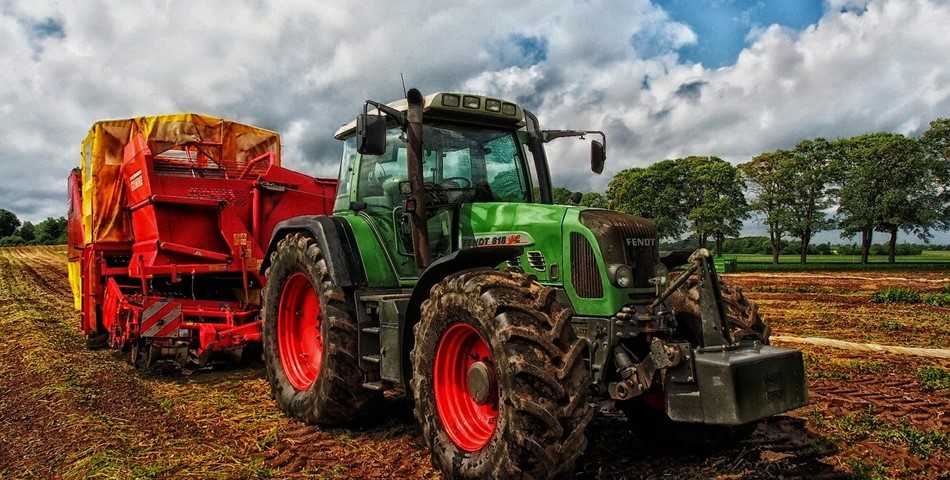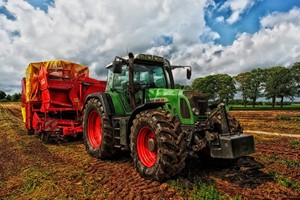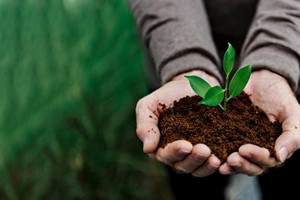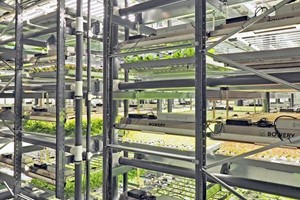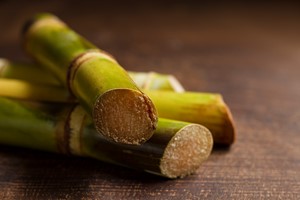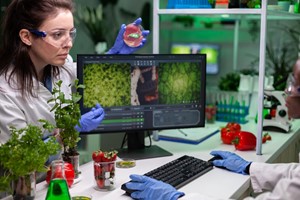Farming is an element of everyday life that we probably all take for granted. Prior to plant cultivation humans were hunters and gatherers. Agriculture takes its origins back thousands of years, with evidence pointing to early farming as far back as 100,000 years ago.
Wild grains were among the first items to be gathered, with the planting of them believed to have started around 11,000 years ago. The 20th century brought about rapid change in the agricultural sector with industrial agriculture becoming the most common area of farming.
Through the years it is not only the type of farming that has changed, but how we do it. Here, we take a look at some of the major changes in farming and how its landscape has transformed over the last 100 years.
100 Years Ago
The National Farmer’s Union was officially formed in 1908 to represent the interests of farmers but it wasn’t until 1917 that the first laws came into effect. The Corn Production Act, which guaranteed British farmers a good price for their crop, was followed up by the 1920 Agriculture Act, designed to support price guarantees for agricultural products and to maintain minimum wages for farm labourers.
They couldn’t help to prevent the post-World War One crash in wheat prices though, as prices slumped from 84s 7d to just 44s 7d 18 in a year. Both acts were later repealed in what many coined the Government’s Great Betrayal.
It resulted in a free market economy and almost a quarter of all British land had changed hands by 1922. A depression was felt across the sector as wheat acreage halved and land remained untenanted. The dark days of 1920s farming came to an end with governmental promises of investment and the following innovations put farming on a very different map 100 years on.
Machinery
A need for machines during the 1960s brought about a monumental change in farming practices and a 30-year period saw drastic changes to farming practices. The Howard BigBaler drew great interest when it launched in 1972 as the world’s first machine that could make big square bales. The bales were 2.4m long and weighed almost 550kg, something even the strongest farmer couldn’t lift manually.
It’s success was short-lived owing to reliability issues, but the rise of the combine harvester brought an end to straw-walker combines that had previously dominated the sector. The Axial-Flow combines were created with rotary machines and 40 years on more than 160,000 machines have been developed and sold.
With a huge focus on cutting costs across all industries in 2020, John Deere has announced plans for electric tractors. Engineers have developed the John Deere Joker, a fully autonomous electric tractor which comes complete with articulated steering and a tracked single axle. The product is still being developed and is expected to hit the market in the early 2030s.
Meat Production
The rise in demand for meat, including cattle, poultry, sheep, goat, pigmeat, and wild game, has seen meat production quadruple in 50 years from 71 million tonnes in 1961 to 341.16 million tonnes in 2018. Although Asia had been just the third largest producer at the start of the 1960s, it now produces more than double the quantity of meat than its nearest continental rival, Europe, which harvests just 63.85 million tonnes compared to Asia’s 143.71 million tonnes.
China’s dominance of the market is underlined by the fact it produced 40 times more meat than the UK in 2018. Poultry has become one of the most farmed meats in modern times, with production rising from just 12% in 1961, to 35% in 2018, second only to pigmeat, which accounts for 35-40% globally.
Boosted by its strong economic growth, China has also seen a 15-fold increase in consumption of meat, more than any other country. However, it is still Australia that is the largest meat-eating nation, consuming around 116kg per person by 2013.
The Rise of Technology
As with any industry, the farming sector has been transformed as technology has been developed. Back in the 1930s planter technology consisted of grain drills and corn planters. The creation of the rust-resisting galvanized steel box helped ensure an overall uniform pattern for planting seeds, while the corn planter was able to plant two rows at a time.
The Green Revolution of the 1960s saw the introduction of irrigation and crop management techniques that transformed agriculture. It brought about high-yielding rice varieties as crops were cross-bred, bringing about hybrid versions that combined the best of both. The increased quantities started to match the trend for higher demand and saw cereal production more than double in developing countries by 1985.
In 2020, the gadgets on the market would be unrecognisable to a 1920s farmer, such has been the rapid influx on new machinery. Hoofcount Transit, an individual cow feeding, weighing, and footbathing station, sounds like something that would not have been needed 100 years ago, but farmers expect that it will monitor feed intake and assist with transition cow management, a factor often overlooked.
Offsetting Carbon Emissions
With climate change dominating headlines across the globe, farming contributes to 10% of the UK’s emissions. The sector has long been criticised for a failure to tackle pollution. Much of the criticism comes from the machinery used within the meat and dairy industries, while many of the chemicals found in fertilisers and animal waste have led to calls for action from the farming community.
The National Farmers Union has set a target to reduce and counterbalance emissions, while working to offset carbon emissions by 2040. Improving productive efficiency and land management and changing land use to capture more carbon are just some of the measures the NFU will use across England and Wales. They will also encourage members to capture methane to repurpose for heating people’s homes, alter the diets of cattle and sheep and switch a focus to more plant-based products.
If you told a farmer in the 1950s that robots and drones would be used to map out pesticide and fertiliser application, they would have laughed in your face. But that is the reality in 2020 as drones and sensors are being implemented to ensure more accurate application. The more precise placement of nitrogen fertiliser, only in areas it is really needed, will cut emissions and is expected to dominate the future of farming practices.
Flogas Britain




